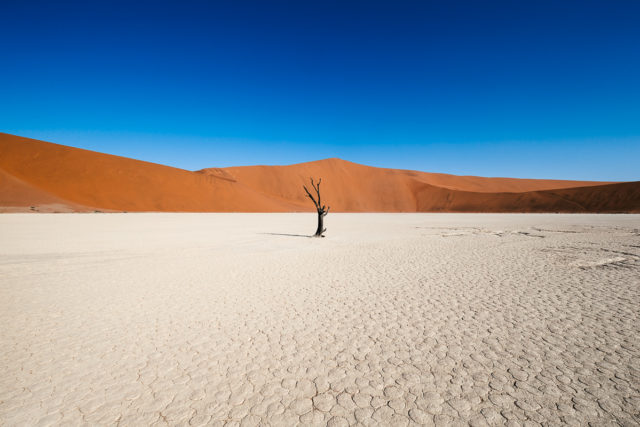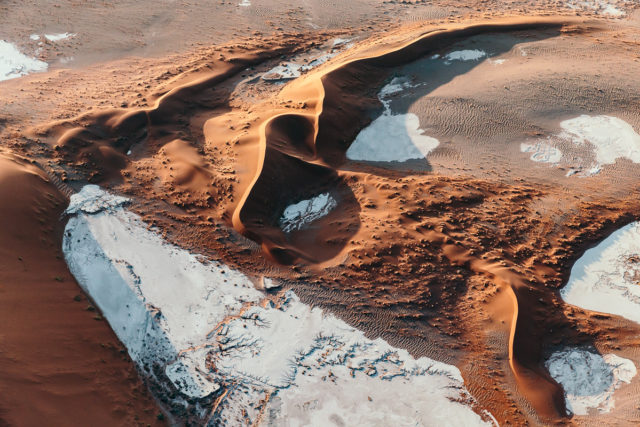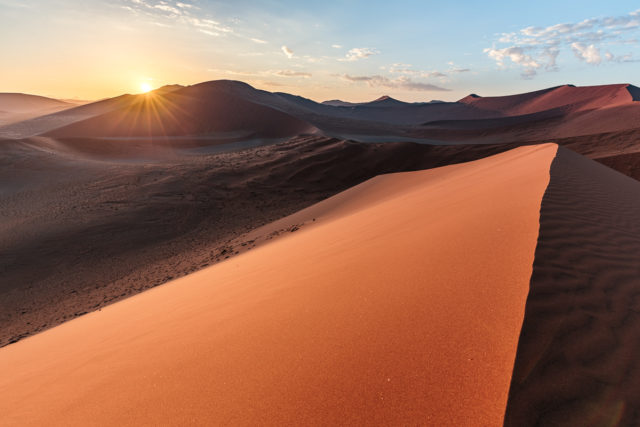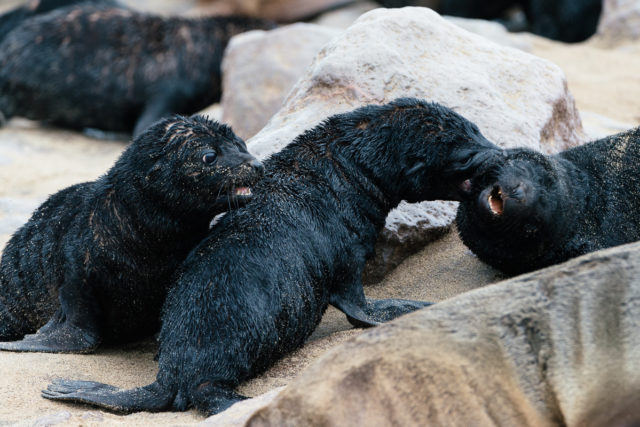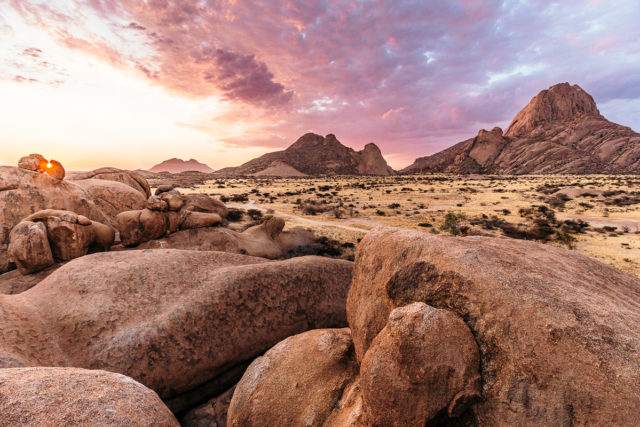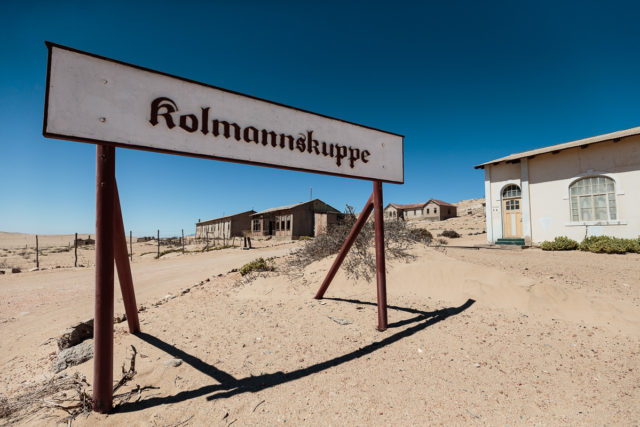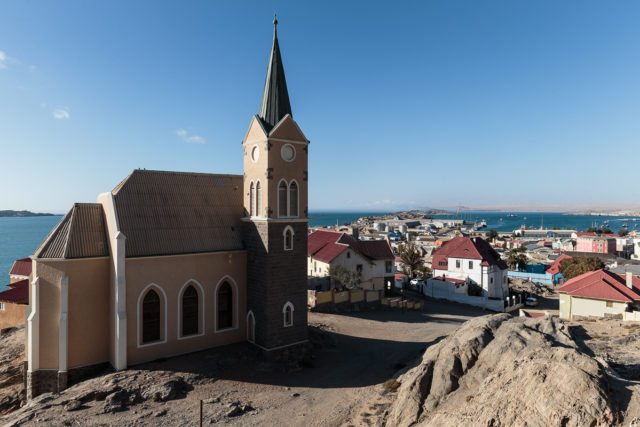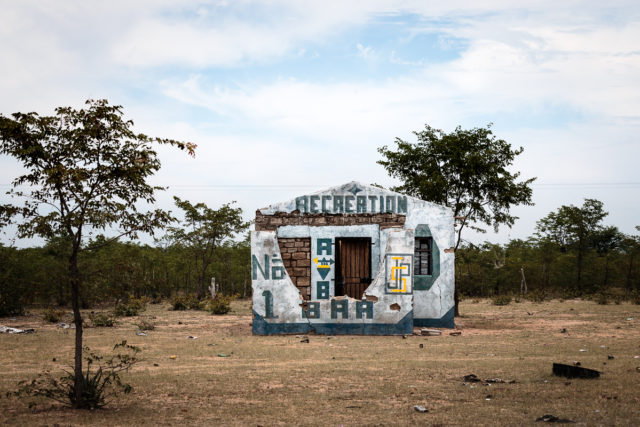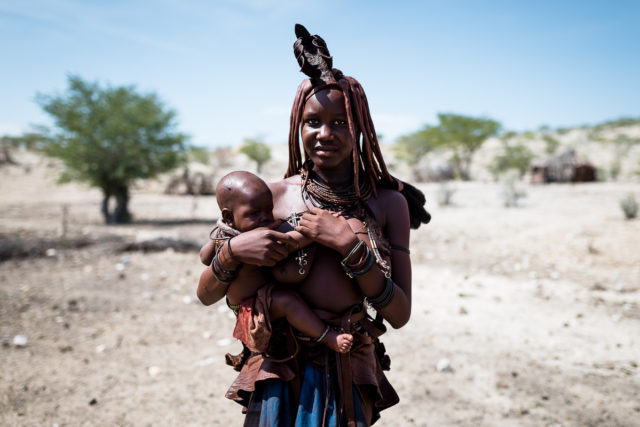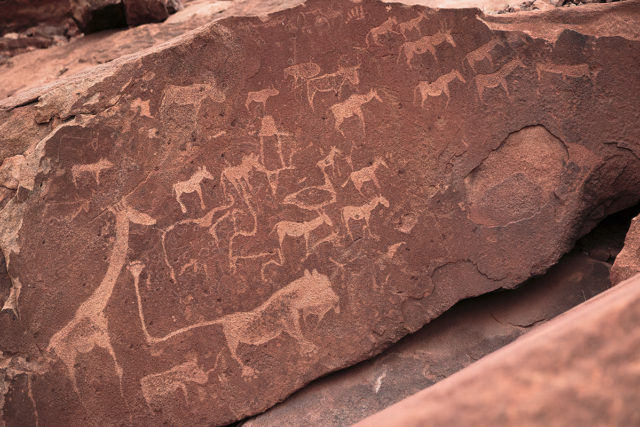At the end of the funnel reaching into the big red dune giants of Namib Desert, that is Tsauchab River, is a place that could not be more unreal: the Deadvlei. The white clay pan is the stage of petrified acacia trees being up to 500 years old. Trees being so typical for the landscape of the Black Continent.…
Read More
With more than 80 million years of existence, Namib desert is the oldest on Earth. With day temperatures easily exceeding 120 °F it is also one of the world’s most hostile places. Despite all inhospitality it boasts with beauty, especially at sunrise or in the evening hours. Then the desert becomes on eye candy made by giant dunes, strong contrasts and hidden structures, that are being revealed best when seen from above with a helicopter flight…
Read More
The giant red dunes of Namib desert belong to the worldwide tallest of its kind. They pile up at Sossusvlei, were Tsauchab River disappears in the sand of Namibia. Only one of those sand heaps may be climbed, that is the dune at kilometre 45. It rises up some ~170 metres high and is built by 5-million-year old sand deposits of the Kalahari.…
Read More
If conditions are good, then life in Africa becomes literally exuberant. One of those places is Cape Cross, where about 250.000 brown fur seals romp about the cold but rich in nutriment waters of Benguela Current. The home of one of the largest seal colonies of the black continent has a large kindergarten full of cute seal puppets, but out in the water lie great white sharks in ambush…
Read More
The unconquerably smooth granite of Spitzkoppe is the solidified vent of an old volcano. Because of its shape Spitzkoppe’s second name is Matterhorn of Namibia. Its immediate vicinity is one of Africa’s most spectacular landscapes, being so impressive, that director Roland Emmerich shot parts of 10.000 BC over here.…
Read More
Against the background of the imperial endeavours of Great Britain and France, Germany’s colonial adventures started late. One of those liaisons, that even today sparks a yern to see distant places, is German South-West Africa, nowadays Namibia, where at the turn of the century diamonds got found. The story of that boom tells Kolmanskop; the once richest settlement of Africa existed only to wring the gem stones from the desert but is now an abandoned ghost town being reconquered by the sand of the Namib…
Read More
A city in the middle of nowhere, being surrounded by millions of tons of desert sand and directly at the shore of the Atlantic. A city that braving the elements preserves the architectonic heritage of the Wilhelmine era and standing for world-class oysters. All that is Lüderitz, located at the ocean on Namibia’s west coast…
Read More
In northern Namibia, between the giant Etosha salt pan and the border to Angola, countless bars and taverns shake hands along the roads connecting Oshakati, Oshikuku and Outapi. Most of them are a product of modern time, but some are a witness of a time period when former German South-West Africa struggled for independence as they served thousands of soldiers with booze and fun during South African Border War…
Read More
Where Kunene River plunges some 40 metres down at the Epupa Falls and where it gently fondles southern Angola, there begins the land of the Himba tribe. Their homeland’s ruggedness and drought has a bizarre mysticism being likewise exotic as the nomad tribe that is living half naked but always adorned under the scorching African sun…
Read More
The black continent can look back onto a far-reaching history as among all landmasses of our planet Africa is inhabited by humans for the longest time. References of that time are the various rock painting site. Two of them are Tsodilo Hills in Botswana as well as the mountain area of Twyfelfontein in Namibia’s Damaraland.…
Read More
